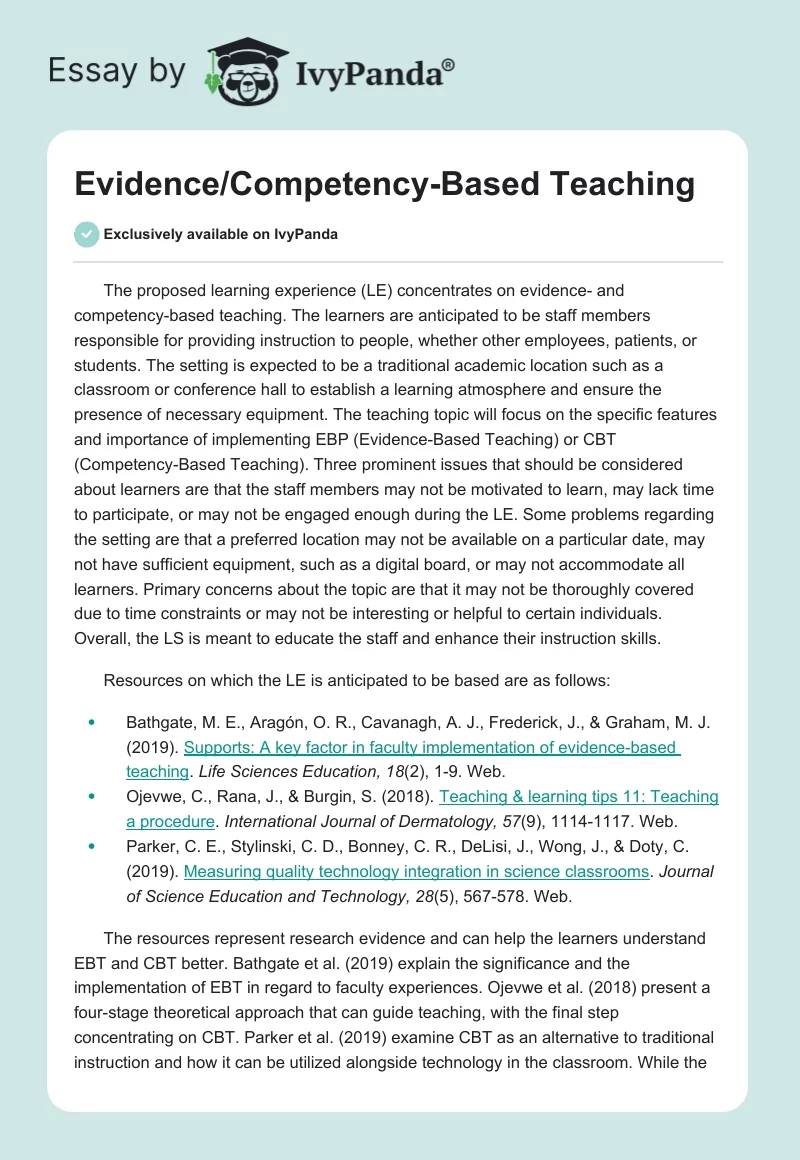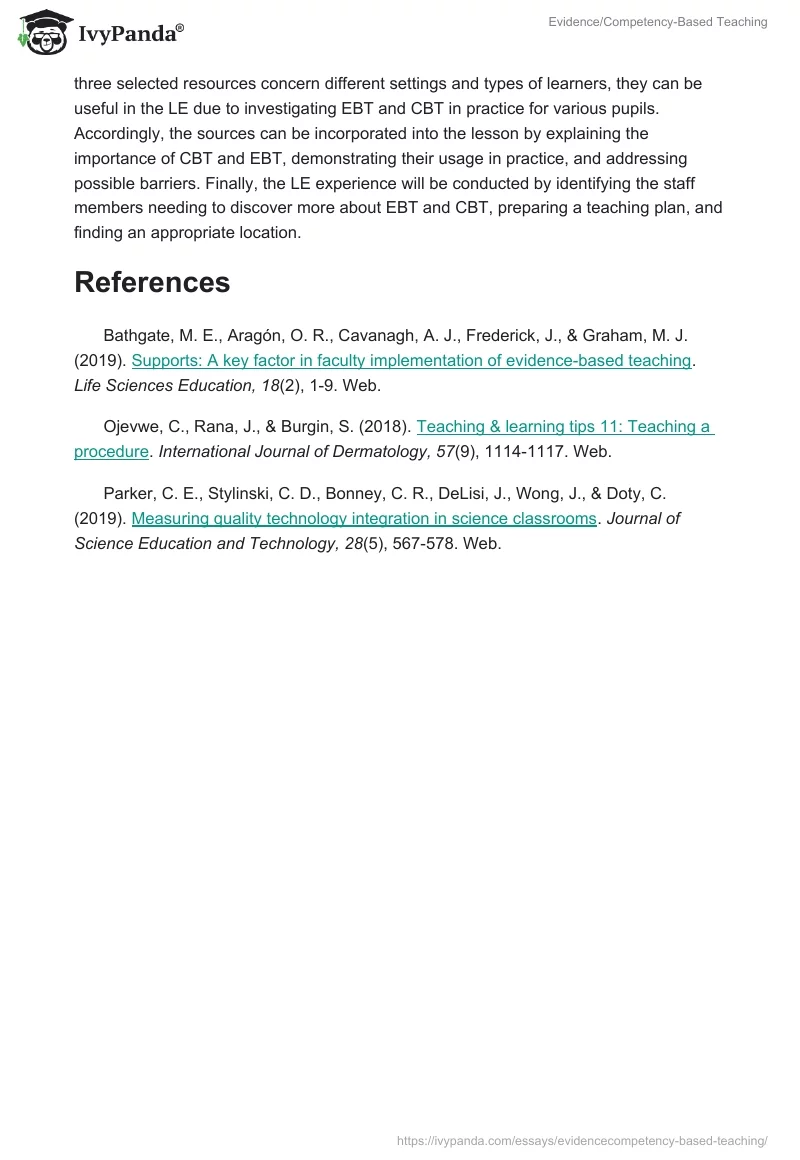The proposed learning experience (LE) concentrates on evidence- and competency-based teaching. The learners are anticipated to be staff members responsible for providing instruction to people, whether other employees, patients, or students. The setting is expected to be a traditional academic location such as a classroom or conference hall to establish a learning atmosphere and ensure the presence of necessary equipment. The teaching topic will focus on the specific features and importance of implementing EBP (Evidence-Based Teaching) or CBT (Competency-Based Teaching).
Three prominent issues that should be considered about learners are that the staff members may not be motivated to learn, may lack time to participate, or may not be engaged enough during the LE. Some problems regarding the setting are that a preferred location may not be available on a particular date, may not have sufficient equipment, such as a digital board, or may not accommodate all learners.
Primary concerns about the topic are that it may not be thoroughly covered due to time constraints or may not be interesting or helpful to certain individuals. Overall, the LS is meant to educate the staff and enhance their instruction skills.
Resources on which the LE is anticipated to be based are as follows:
- Bathgate et al. “Supports: A key factor in faculty implementation of evidence-based teaching.”
- Ojevwe et al. “Teaching & learning tips 11: Teaching a procedure.”
- Parker et al. “Measuring quality technology integration in science classrooms.”
The resources represent research evidence and can help the learners understand EBT and CBT better. Bathgate et al. (2019) explain the significance and the implementation of EBT in regard to faculty experiences. Ojevwe et al. (2018) present a four-stage theoretical approach that can guide teaching, with the final step concentrating on CBT.
Parker et al. (2019) examine CBT as an alternative to traditional instruction and how it can be utilized alongside technology in the classroom. While the three selected resources concern different settings and types of learners, they can be useful in the LE due to investigating EBT and CBT in practice for various pupils.
Accordingly, the sources can be incorporated into the lesson by explaining the importance of CBT and EBT, demonstrating their usage in practice, and addressing possible barriers. Finally, the LE experience will be conducted by identifying the staff members needing to discover more about EBT and CBT, preparing a teaching plan, and finding an appropriate location.
References
Bathgate, M. E., Aragón, O. R., Cavanagh, A. J., Frederick, J., & Graham, M. J. (2019). Supports: A key factor in faculty implementation of evidence-based teaching. Life Sciences Education, 18(2), 1-9. Web.
Ojevwe, C., Rana, J., & Burgin, S. (2018). Teaching & learning tips 11: Teaching a procedure. International Journal of Dermatology, 57(9), 1114-1117. Web.
Parker, C. E., Stylinski, C. D., Bonney, C. R., DeLisi, J., Wong, J., & Doty, C. (2019). Measuring quality technology integration in science classrooms. Journal of Science Education and Technology, 28(5), 567-578. Web.


